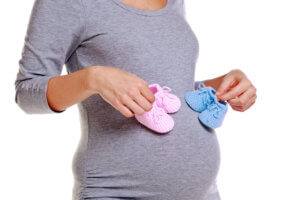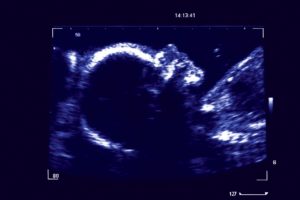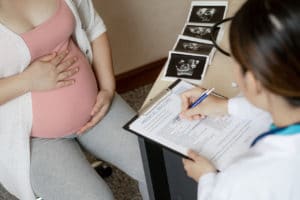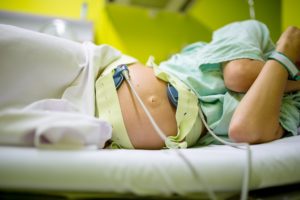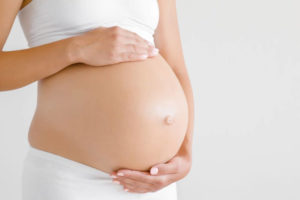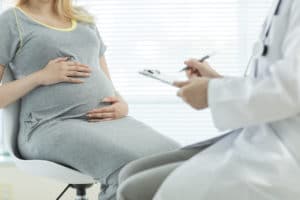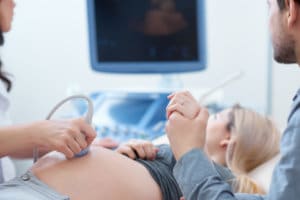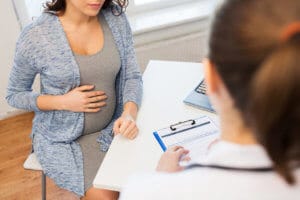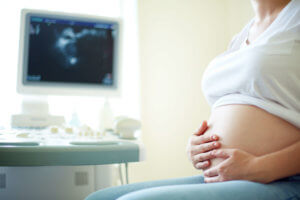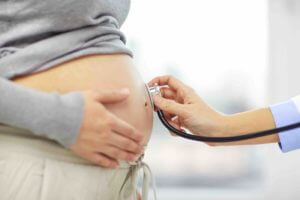The so-called triple test is a method of prenatal diagnostics developed many years ago. Expectant parents can use it to find out about a possible disability or disorder before birth.
This opens the door for further measures and sometimes decides whether the pregnancy will continue. Find out everything you need to know about the Triple Test here.
What Exactly Is The Triple Test?
The Triple Test, which is also known as the MoM Test (Multiples of the Median) or Second Trimester Screening, is a prenatal diagnostic test.
As the term second-trimester screening reveals, this test is performed in the second trimester of pregnancy, namely between the 15th and 18th week of pregnancy, in exceptions also still in the 19th or 20th week.
The triple test calculates the probabilities that the unborn child will be born with certain malformations or disabilities. Three special pregnancy hormones are measured in the patient’s blood and evaluated together with other factors.
The examination is not mandatory, but is voluntary and must be paid for by the pregnant women themselves. Triple testing is not feasible in multiple pregnancies.
The test is now rather controversial in prenatal diagnostics, as the laboratory results are comparatively uncertain and not clearly significant. Only probabilities are calculated, but no definite diagnoses are made.
As a result, the triple test, which is usually performed between the 15th and 18th week of pregnancy, is not paid for by health insurance companies – patients must therefore cover the entire cost themselves.
From a methodological point of view, this examination is a screening test in which false positive or false negative results occur relatively frequently. This means that some abnormalities are not detected and in other cases irregularities are found that do not exist.
The triple test alone is therefore of little significance and must always be coupled with further prenatal diagnostic examinations in order to obtain a reliable result. Nevertheless, the test has its raison d’être, even though “only” probabilities for malformations are calculated.
Table of contents
What Is The Aim Of The Triple Test?
The Triple Test is intended to detect indications of possible malformations already during pregnancy in order to enable further examinations or interventions at an early stage.
The method is based on the principles of a screening test, so no definite diagnoses are made, only probabilities are calculated. If the risk of a certain malformation or disability is increased, more precise diagnostic examinations can follow.
The test is primarily intended to detect a possible Down syndrome, which occurs most frequently in relation to other possible malformations. Specifically, results are obtained for the following syndromes and disorders:
Down Syndrome (Trisomy 21)
Down syndrome is the most common chromosomal abnormality and is associated with both mental and physical disability. The risk of giving birth to a baby with trisomy 21 increases exponentially with the mother’s age. The triple test can detect Down syndrome prenatally with a probability of about 74%.
Edwards Syndrome (Trisomy 18)
Edwards syndrome is the second most common trisomy that occurs in live births. This anomaly causes very high mortality already in the womb and also shortly after birth. Most affected individuals do not even reach adolescence. The triple test detects this syndrome with about 70% probability.
Pätau Syndrome (Trisomy 13)
Pätau syndrome is the third most common trisomy, which, however, occurs in only one out of about 8000 babies and is thus relatively rare. Again, mortality is exceptionally high during pregnancy and in the first few years after birth. This anomaly can be diagnosed without a doubt using the triple test.
Turner Syndrome (Monosomy X)
Turner syndrome occurs exclusively in female fetuses and results in a 99% chance of miscarriage. However, children who survive the pregnancy and are born can lead a normal life.
Maldevelopments such as short stature or lack of development of secondary sex organs can be compensated for by medication. The syndrome can also be detected without doubt by the triple test.
Klinefelter Syndrome (XXY)
Klinefelter’s syndrome is a comparatively common anomaly in the male sex, but it is never diagnosed in an estimated 75% of all affected individuals due to the varying degrees of expression. The triple test detects this syndrome with about 75% probability.
Triploidy
Triploidy is a severe disorder and in almost all cases leads to death in the womb. Rarely, babies survive birth but die shortly thereafter. The incidence is estimated at about 2:100, with most cases ending in miscarriage during the first trimester. Triploidy can be 100% detected by the triple test.
Neural Tube Defects And Abdominal Wall Defects
Neural tube defects as well as abdominal wall defects describe malformations of the brain, spine and abdomen during pregnancy.
The most common is anencephaly (important parts of the brain, meninges or skull are not formed) or spina bifida (“open back” in the baby). The Triple Test detects these forms of maldevelopment in about 80% of cases.
How Does The Triple Test Work?
Usually, the Triple Test is performed between the 15th and 18th week of pregnancy. Blood is drawn from the expectant mother and the concentrations of three hormones (alpha-1-fetoprotein or AFP, free estriol or uE3, and free beta-chain of chorionic gonadotropin or beta-hCG) are measured in the serum.
The results are expressed in MoM (multiples of the median), i.e. by how many times the value is higher or lower than the statistical mean value of the hormone tested. In addition to the blood test, other factors are used for evaluation.
These Hormones Are Examined
Alpha-1-Fetoprotein Or AFP
This hormone consists of a protein and one or more sugar groups. It is physiologically produced during pregnancy. If concentrations greater than 2.5 MoM are detected in the serum, this result indicates a neural tube defect or an abdominal wall defect. Decreased levels, on the other hand, may indicate a trisomy such as Down syndrome or Edwards syndrome.
Free Estriol Or UE3
Estriol is a metabolic product of the sex hormones estradiol and estrone. Decreased levels are often associated with trisomies.
Free Beta-chain Of Chorionic Gonadotropin Or Beta-hCG
The peptide hormone chorionic gonadotropin is indispensable for the onset and maintenance of pregnancy. This hormone is used to determine pregnancy using urine test strips and is associated with morning sickness.
High levels of beta-hCG are indicative of Down syndrome, whereas low levels are more likely to be associated with Edwards syndrome.
Additional Factors Relevant For The Evaluation
In addition to the blood test, a wide variety of factors are used for a more precise evaluation:
- The age of the mother at the calculated date of birth.
- The mother’s body weight.
- Abnormalities of previous pregnancies, especially chromosomal abnormalities.
- Exact gestational age (week plus days) at the time of blood collection.
- Ethnic origin of the mother.
Critical Voices
Since the triple test in principle only shows probabilities, but does not provide concrete results, it is regarded as uncertain and unreliable. Critics therefore describe it as superfluous and unsettling.
In any case, further prenatal examinations are necessary if the triple test reveals any abnormalities. If physical malformations are suspected, a harmless fine ultrasound diagnoses any irregularities very reliably.
If the results of the triple test indicate chromosomal abnormalities, invasive prenatal diagnostic examinations (for example, a chorionic villus sampling, i.e. a biopsy of the placenta) are inevitable in order to be certain.
The extent to which such a risky procedure is sensible and justifiable must be weighed up individually by medical personnel and pregnant women. After many years of experience with the Triple Test, experts recommend the Combined Test (first-trimester screening) instead, which combines several methods of prenatal diagnostics and thus ensures a more reliable result.

